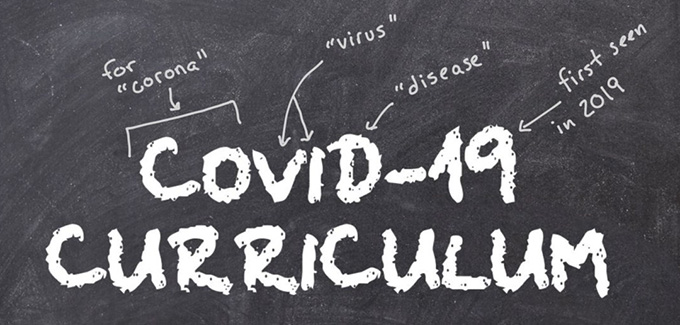
Jodi Benenson and Tara Kolar Bryan are professors in the School of Public Administration at the University of Nebraska Omaha. In the fall of 2020 they coordinated a team-taught graduate-level course called Pandemics, Protest and Policy that centered around public policy and management issues happening in real time. Here, they answer five questions about what they learned.
1. How did you teach students about the pandemic while it’s happening?
Tara Bryan: We wanted to respond to this unprecedented time in a way that can best serve our students and local community by making the most of our faculty’s related expertise. For example, our colleague Njoki Mwarumba taught about the history of pandemics. Bryce Hoflund shared recent research regarding how the COVID-19 pandemic is affecting food insecurity.
I drew on my own expertise by explaining how nonprofits are responding to both the pandemic and the fight for racial justice in Omaha.
2. How did you go about this?
Bryan: We covered a wide array of issues: everything from philanthropy to aviation, and from food security to public health.
About a dozen of our colleagues either lectured over Zoom or facilitated an expert panel of public and nonprofit leaders who are responding to the COVID-19 pandemic, the economic crisis, racial injustice or some combination of those issues. Those instructors also assigned readings and written assignments requiring reflection.
Jodi Benenson: We discussed voter suppression and engagement as the election results were slowly revealed. We talked about public safety and aviation as airlines struggled with a sharp decline in air travel, and the many different ways that countries across the world were responding to the COVID-19 pandemic.
Because most of the students aspire to lead nonprofits or serve in government, we wanted to make sure they understood the integral and active role public administrators are playing during the pandemic.
So we made sure to invite local and national leaders to discuss their direct involvement in a range of issues. These leaders discussed how they sought funds from the CARES Act, a US$2.2 trillion economic relief package Congress approved in March 2020, and organized toward statewide police reform and racial justice.
3. What overarching themes emerged?
Benenson: Inequality emerged as a core theme. Students analyzed how the pandemic and the economic crisis have exacerbated housing, food, law enforcement, voting, education and health care inequities, especially for low-income people and people of color.
Bryan: Another common theme was how the many different things we were addressing were connected. For example, discussing how nonprofit leaders are responding to community needs is related to the financial strains nonprofits are facing because of the greater demand for help with housing, food and health care without corresponding increases in their budgets.
4. What did students get out of this course?
Bryan: The students said they really appreciated our discussions about how where you are born and live can affect your health, because of many forms of inequality, as well as how more students today are experiencing food insecurity.
Many students were unsettled by what they learned about racial inequity from the data presented. This knowledge, in turn, spurred many of them to take action. One said she feels a responsibility to share what she learned in this class with her friends and relatives. Others indicated that they now want to help address racial equality. We also learned from surveys that many students found taking this class to be therapeutic during a generally stressful period in their lives.
Benenson: For some students, it was the first time they learned about the expansive nature of inequality within government agencies and nonprofits. Others have personally experienced many forms of inequality firsthand, such as racism, voter suppression or food insecurity. But the course gave them a chance to examine these issues for the first time in school and to see their own experiences in a new context.
Being in a space where they could discuss problems and solutions, students felt they were being treated more as citizens and problem-solvers than pupils. And they realized that it takes multiple perspectives, experts and lived experiences to solve complex problems.
As an instructor, it was humbling to see our students build a community. While my colleagues and I created the course, it was the students who served as constants each week as they – over time – cultivated an environment ripe for learning, exploration and growth.
Perhaps most importantly, we instructors felt that all of the students developed a stronger sense of responsibility to harness this knowledge and take action in some way. They left the course asking: What can we do?
5. What did you learn yourselves?
Bryan: Teaching about a subject that is unfolding by the day requires you to adapt. As you learn more, different questions arise.
When the semester began, in August 2020, there was no vaccine and the presidential campaign was heating up. When the class finished in December, vaccines were on their way and the election was over. In the last class, one student remarked that this class would have to be different if taught again in 2021. Among other things, the course would perhaps examine how well COVID-19 vaccine distribution has gone in different states and counties.
Also, crises like these can take a heavy personal toll on everyone. For students of color this was especially true. Discussing racial inequalities is not only an intellectual exercise, it is also their day-to-day lived experience. As one student stated, “It is not fun to live a case study.”
Author Bios: Jodi Benenson is Assistant Professor of Public Administration and Tara Kolar Bryan is Associate Professor of Public Administration both at the University of Nebraska Omaha